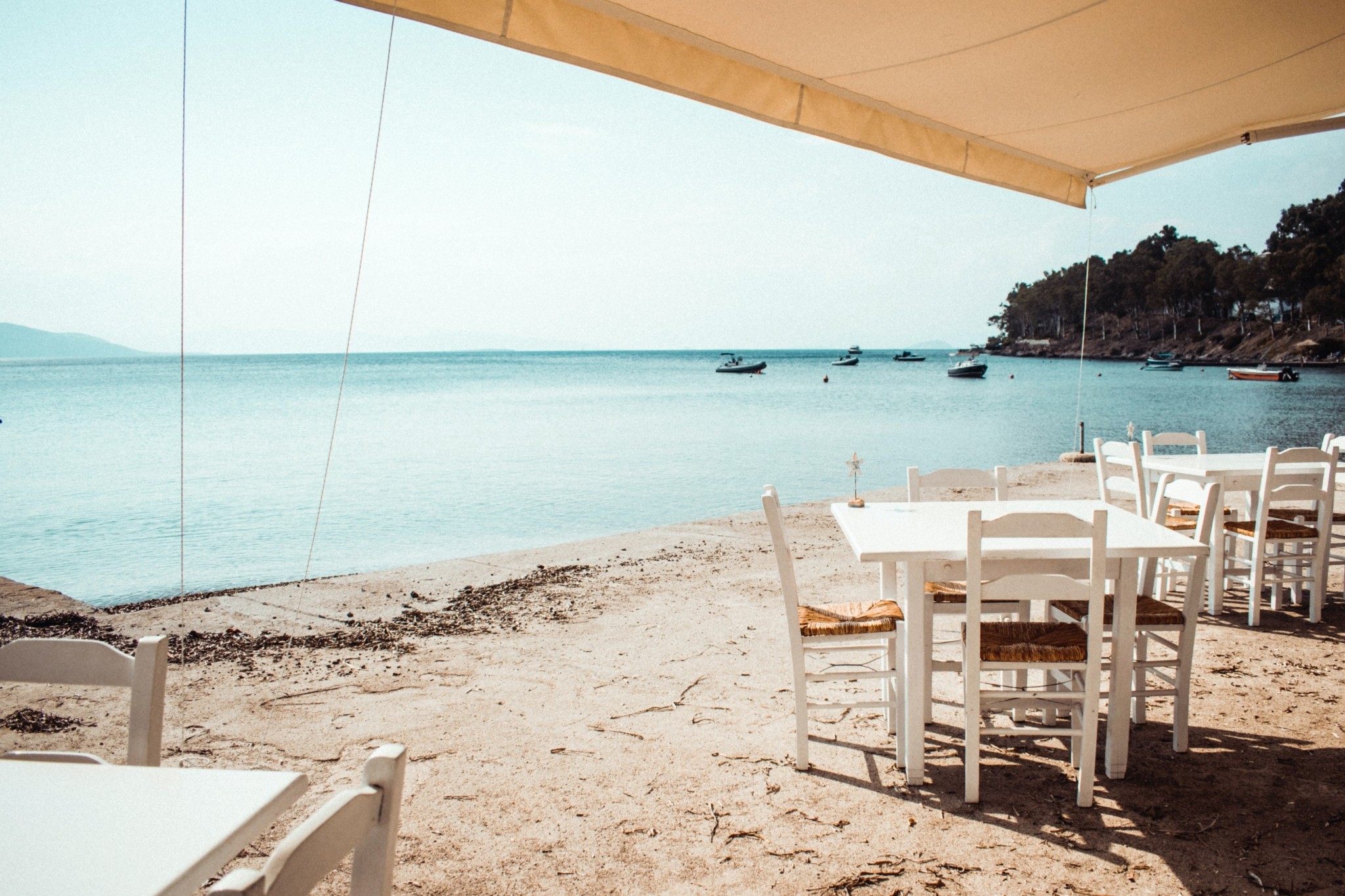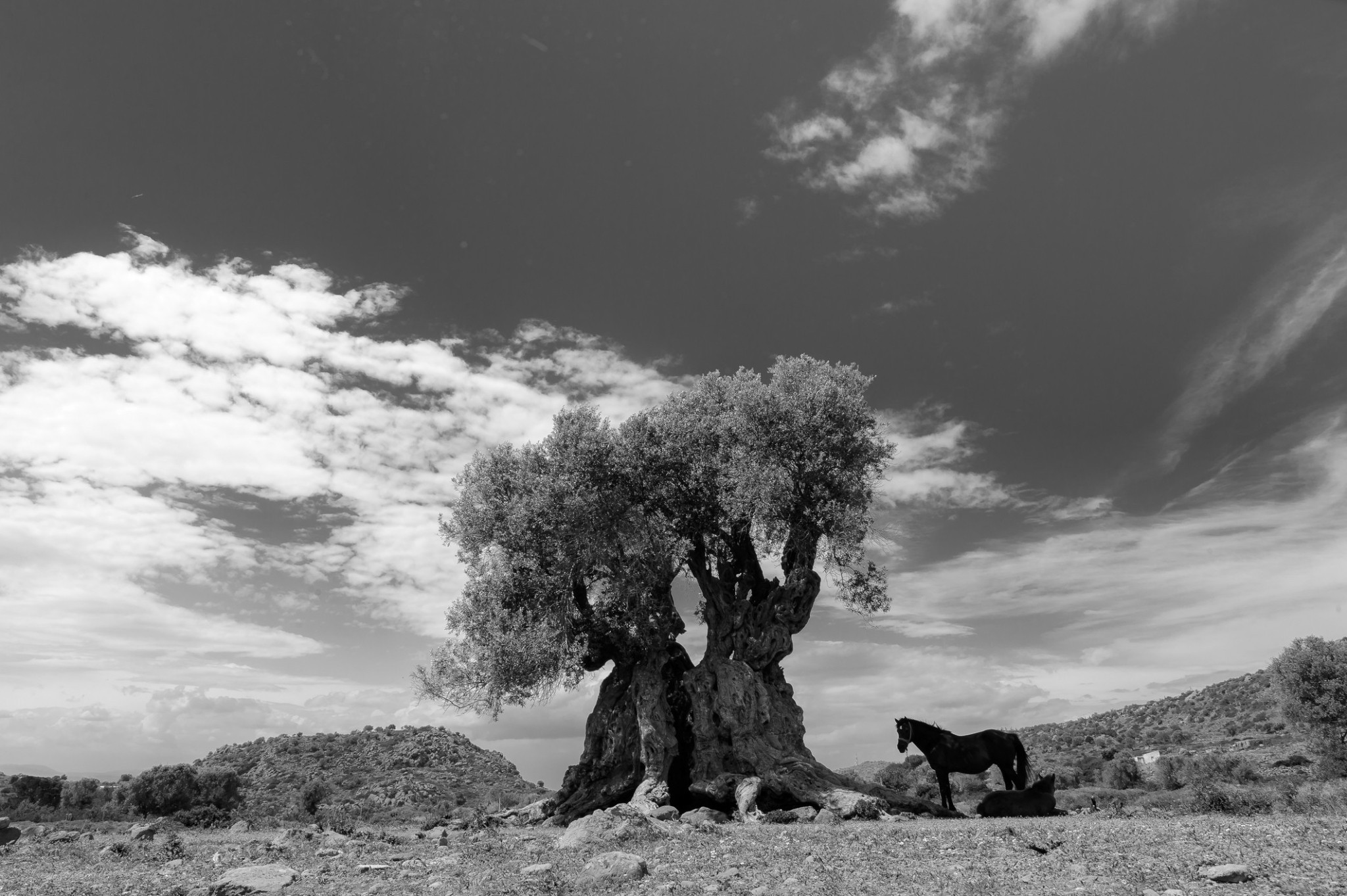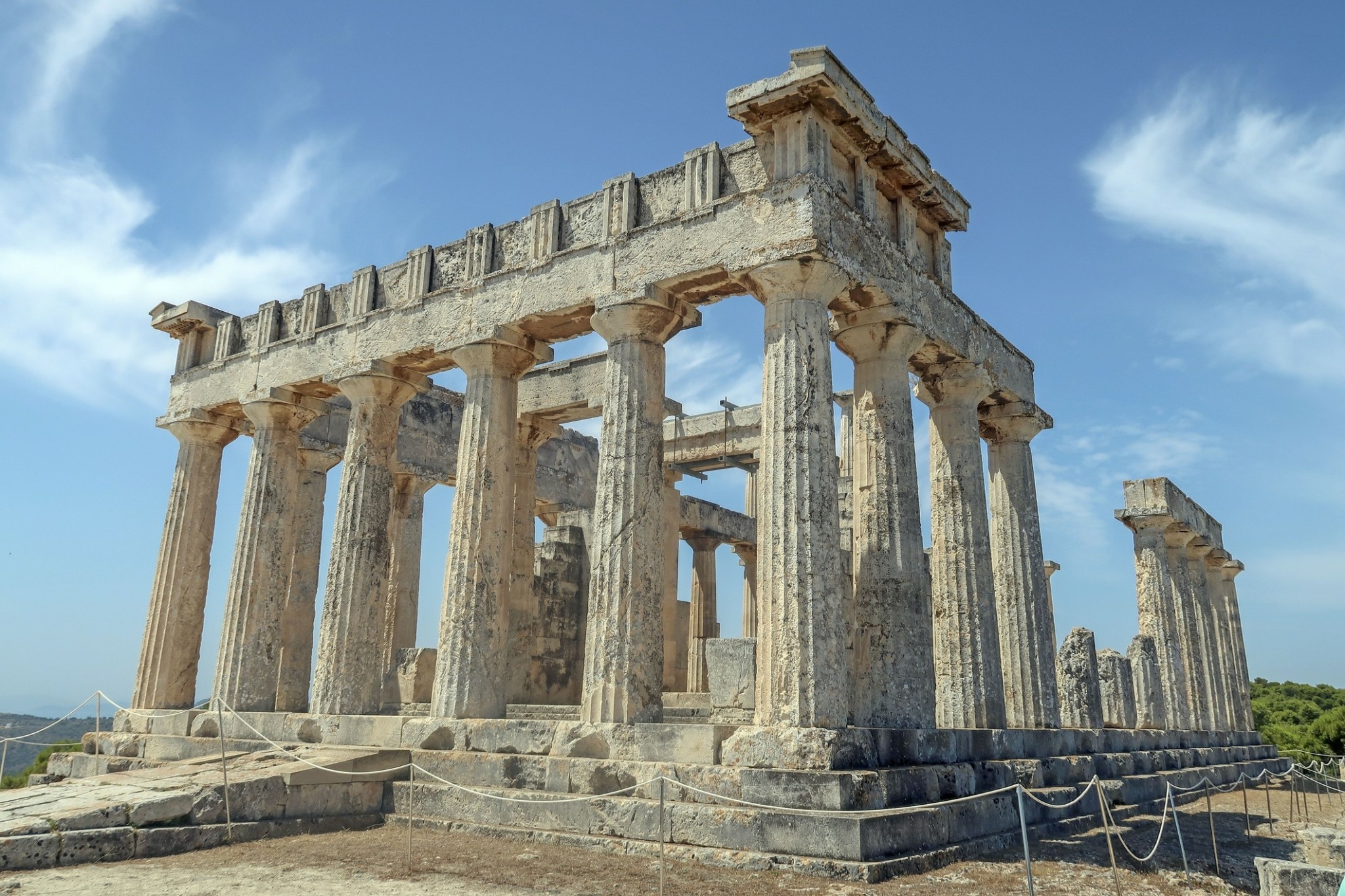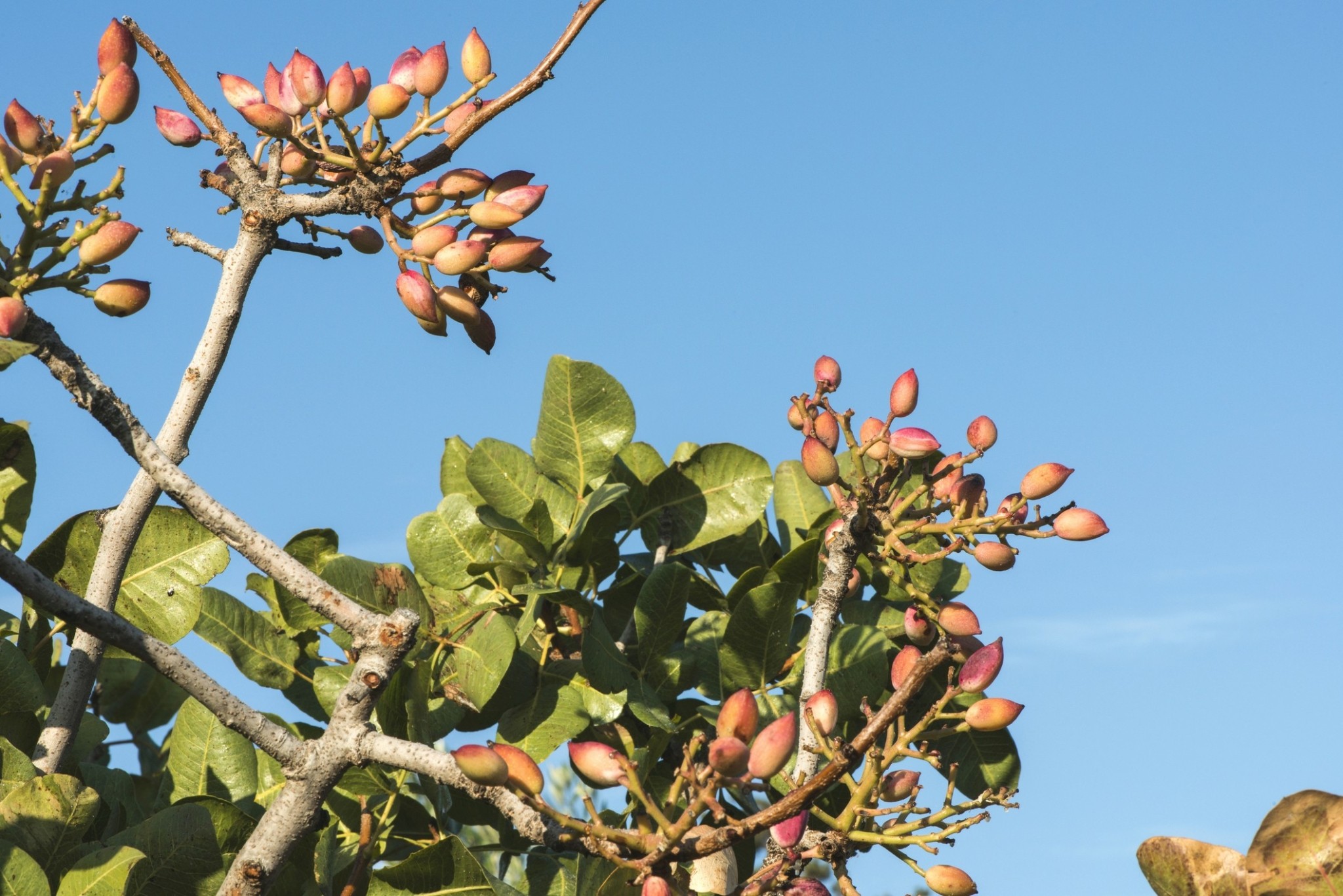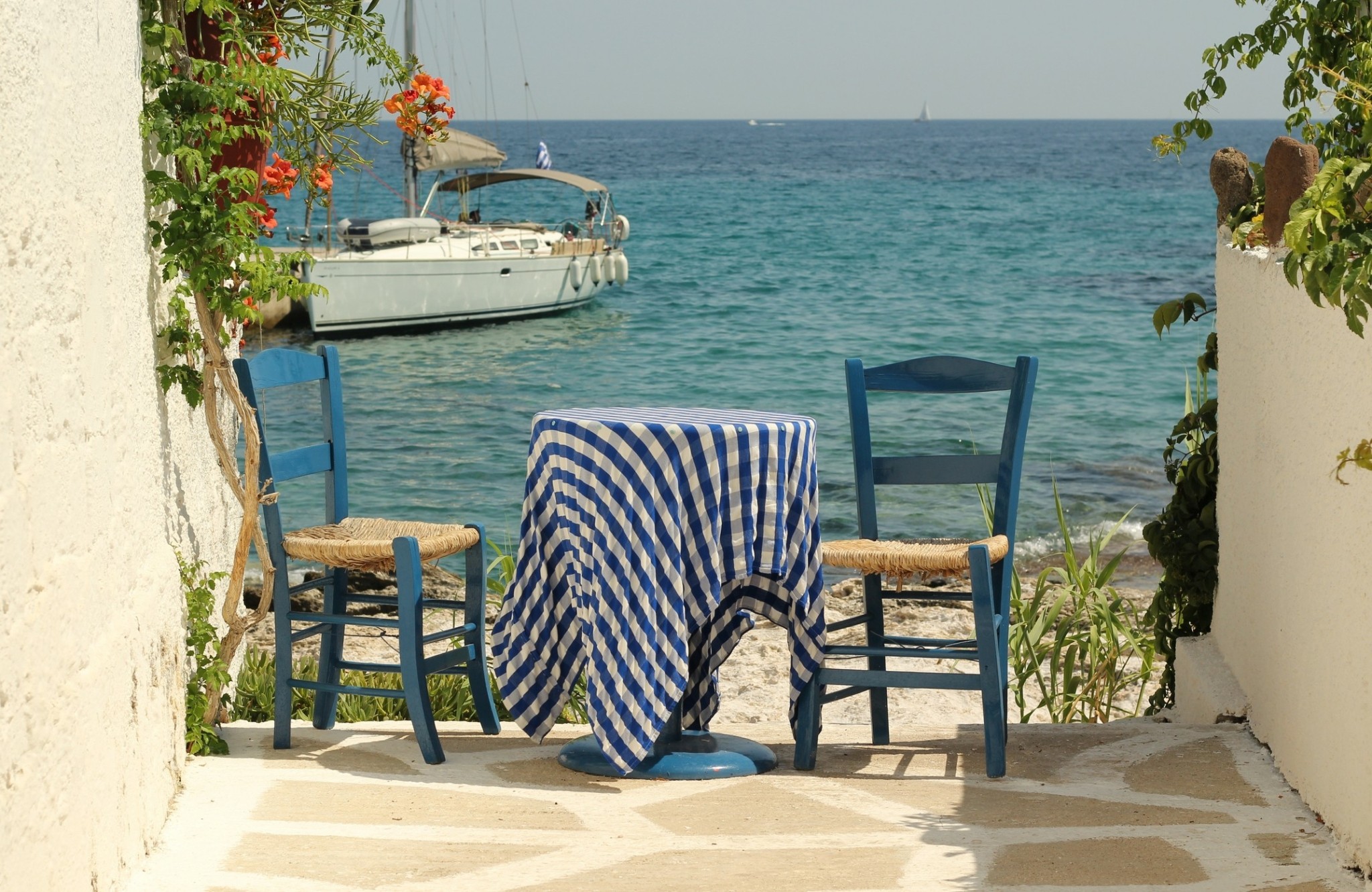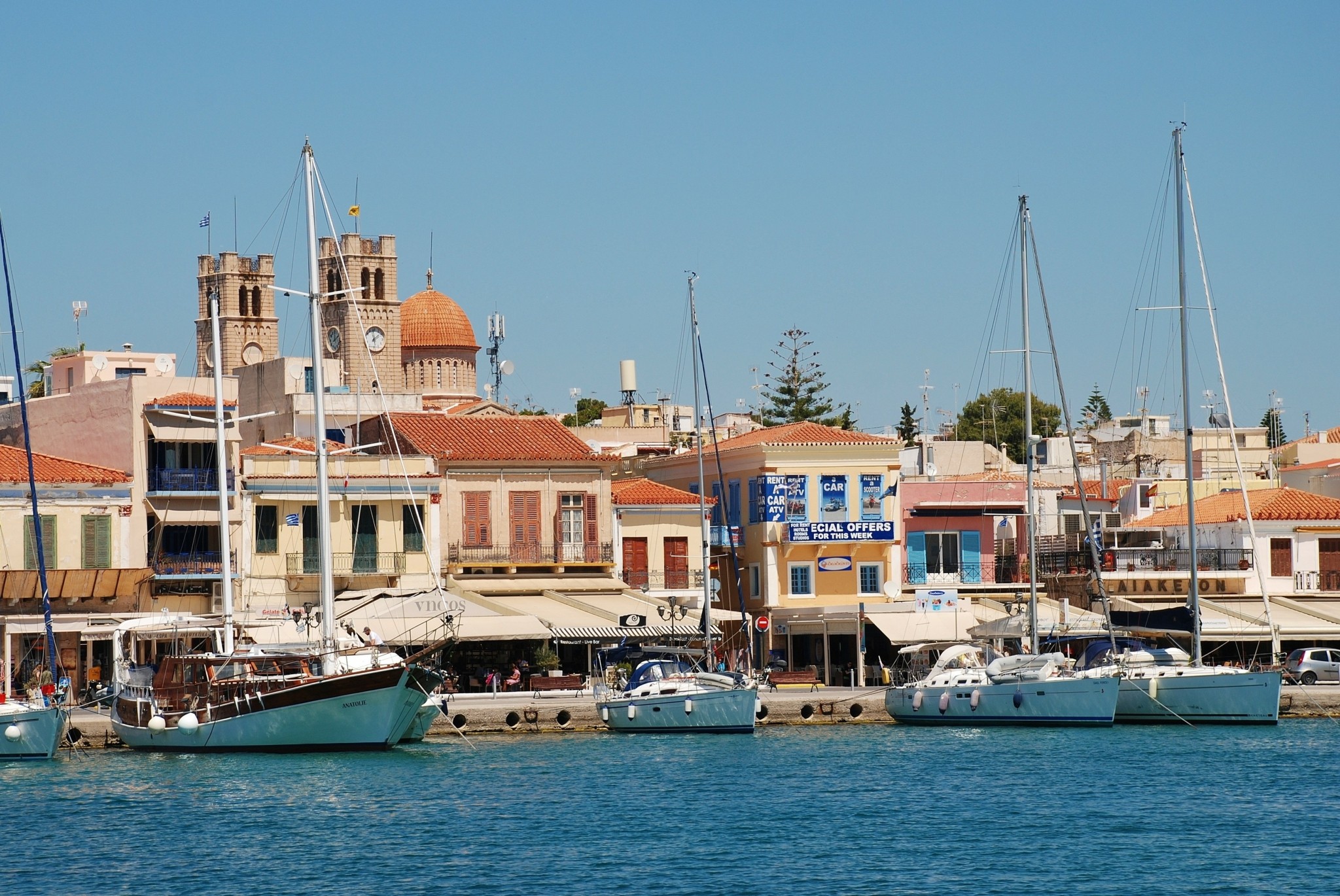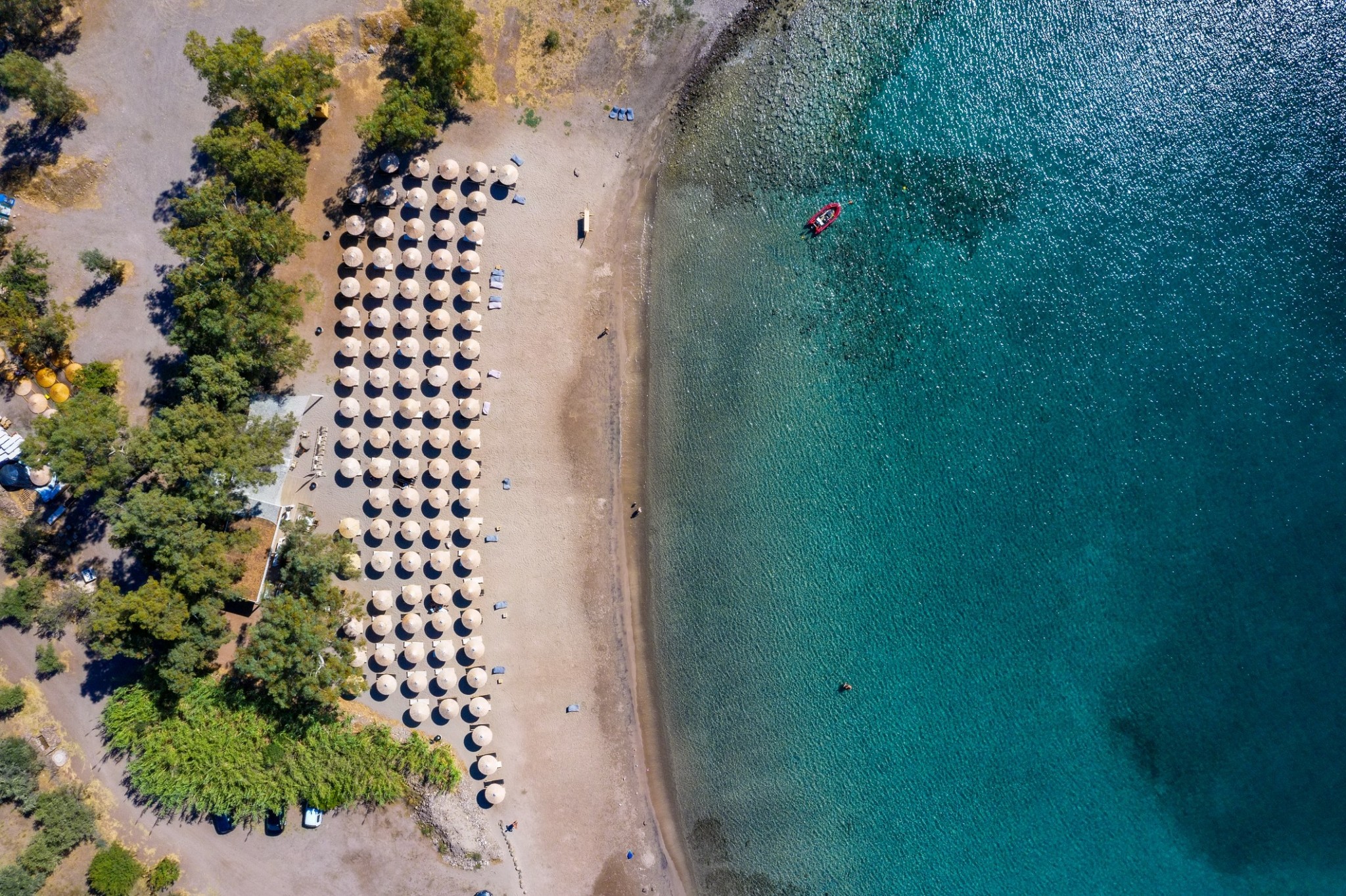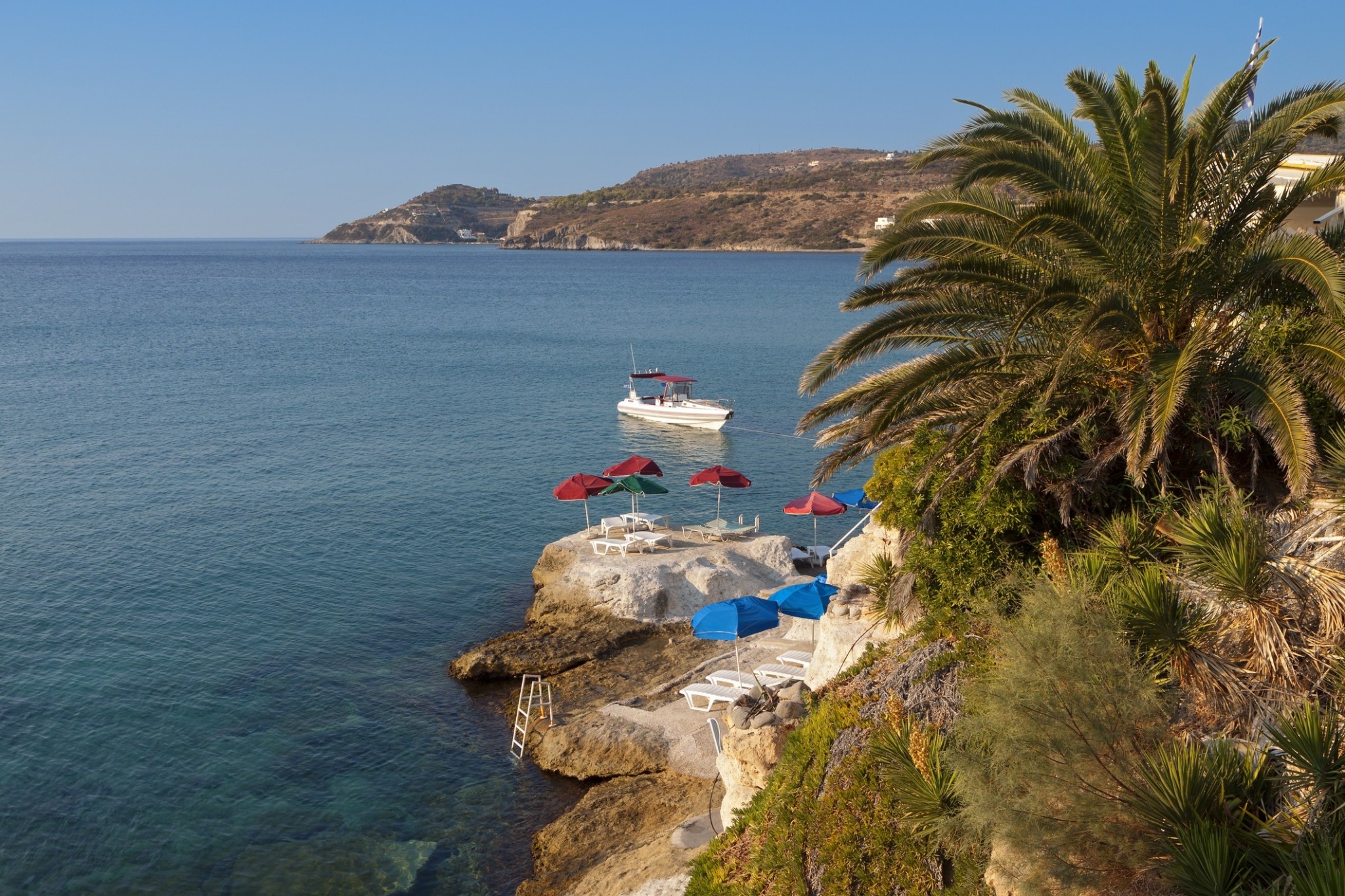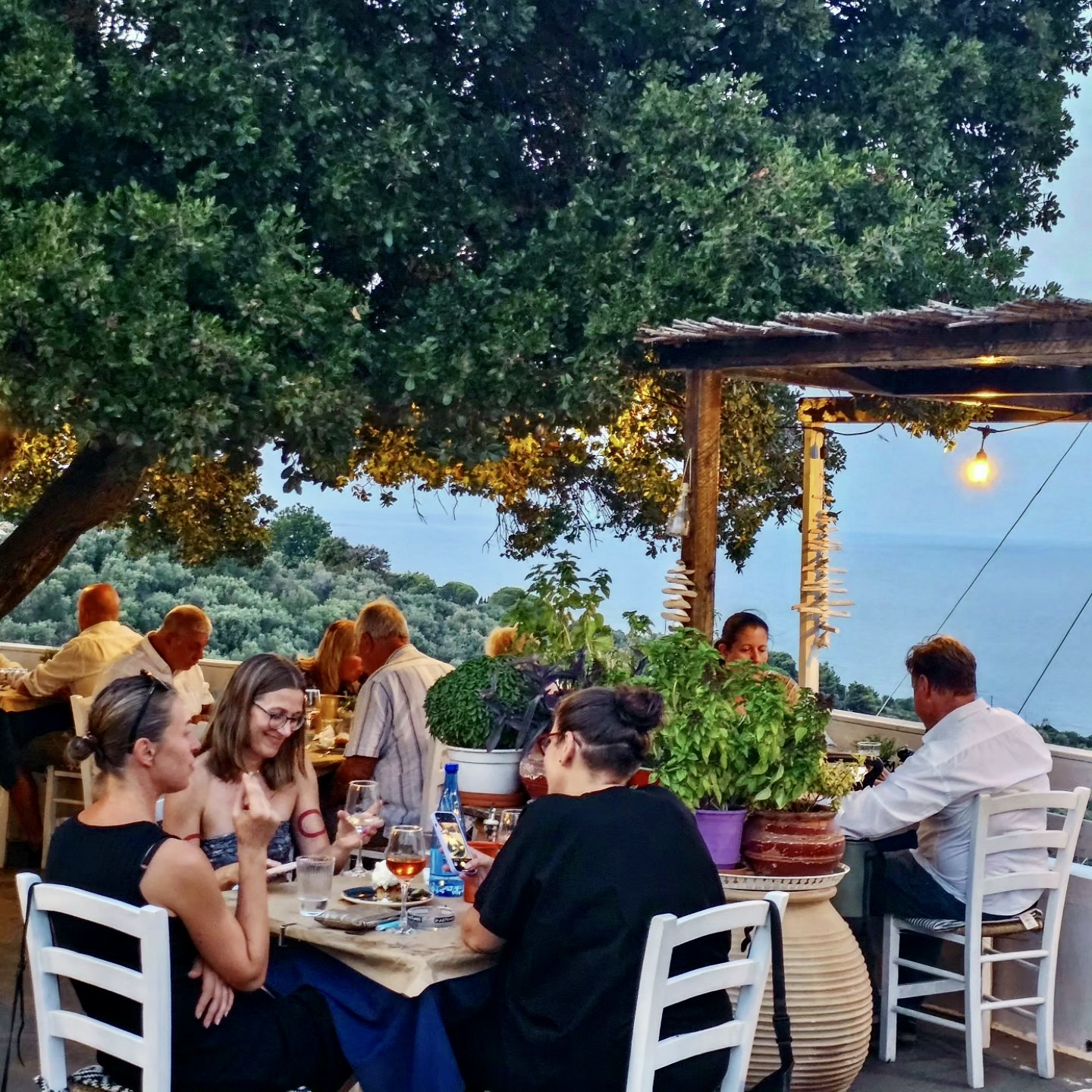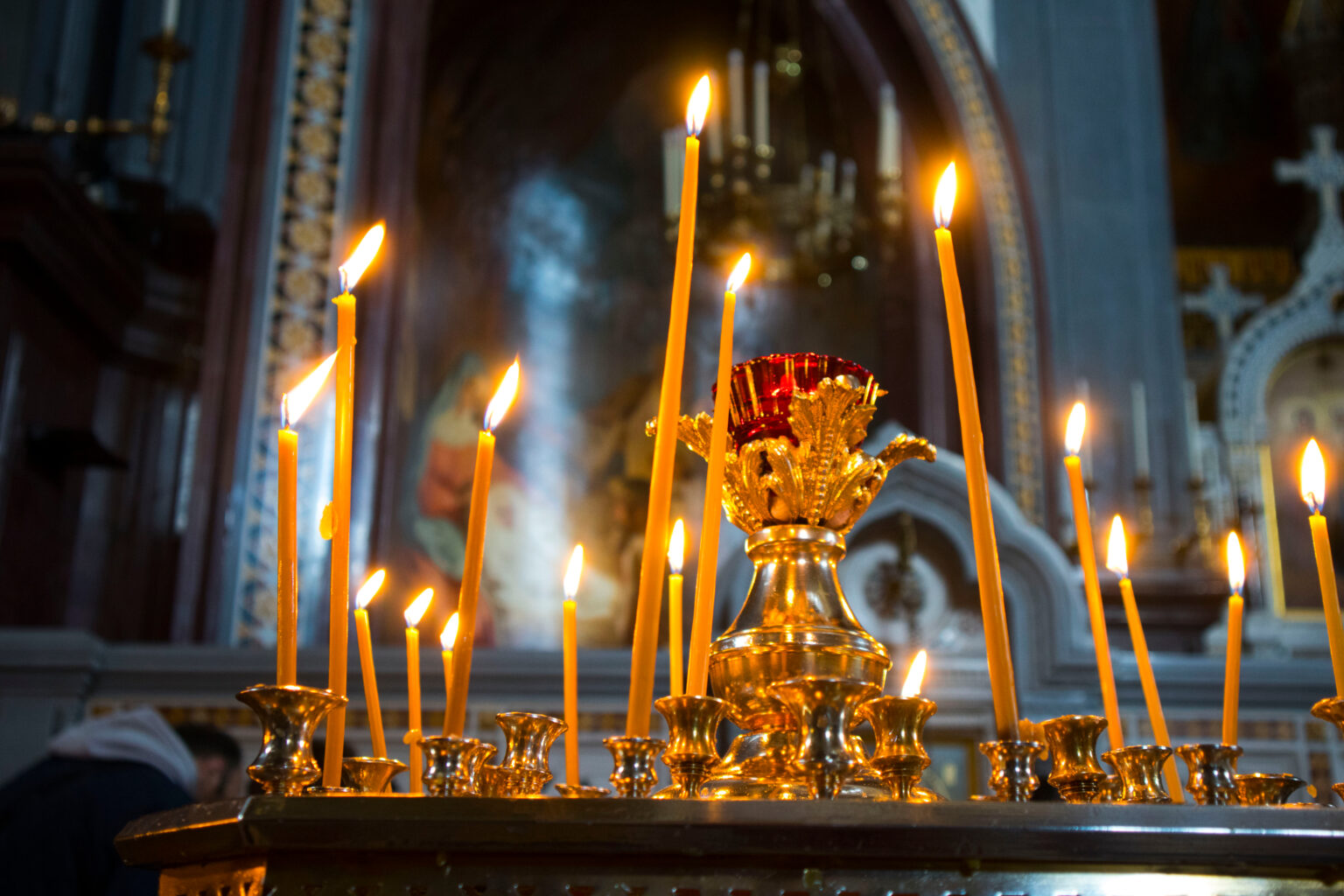“What could possibly be the secret of Aegina’s charm? Could it be the light, the whole atmosphere, which combines the specificity of Attica with that of the island? You have a taste of storm on your lips and at the same time you feel the marble of the temple of Aphaia, the Parthenon, crowning your horizon.” Thus described the famous Greek poet Katerina Aggelaki-Rouk her paradise, where she spent her childhood years.
“What happened in Aegina” a friend asks me. “Lots and lots of things” I reply stupidly repeating a cliché. “Actually, nothing much…” I add, telling the truth, which is never a cliché. I had just returned from a 48-hour, three-day getaway.
The ferry left the port of Piraeus on Friday afternoon, and in an hour it arrived at the main port of the island. For your information, there are three more ports on the island: Agia Marina, Souvala and Perdika, each of which has its own unique spirit and activity. Agia Marina is characterized by its lush pine trees and turquoise waters that attract vast crowds, as well as by the famous, ancient temple of Aphaia. The latter is located on a 160m peak on the east side of the island, about thirteen km east from the main port, next to Agia Marina, an ever popular family destination with a certain bustle. The temple is located 29.5 km southwest of the Acropolis of Athens, which can be seen from here on a clear, cloudless day.
According to the myth, Aphaia was the name of a young Cretan woman of unsurpassed beauty. After escaping from a forced marriage she was rescued by a fisherman from Aegina, who offered her yet another forced marriage in exchange. While running to escape again, outside Agia Marina, towards the top of the mountain, Aphaia disappeared in the forest and no one saw her ever since. It is said that the fisherman, believing that Aphaia had been abducted by the gods, built a shrine in order to appease them. The sunlight reflects on the ancient monuments, causing the visitor’s vision to become blurry. Through this shimmering haze, one can observe the passage of time as if it were a time-lapse study.
What is more impressive is that the temple is located at an equal distance from the Acropolis of Athens and the temple of Poseidon at Sounion, forming an isosceles triangle and giving rise to several stories of mysticism.
The city of Aegina was the first capital of Greece. Today it is the second largest island of the Saronic Gulf in terms of area, population and development. The most significant features of this place are the pistachio groves and the time of dusk –as if the photographer has subtly tampered with the colours.
The older ones of us learned about Vagia from a television series
As the ship docks in the harbour and the sun brushes the features on the faces of people passing by, they all look like Rembrandt heroes. My gaze travels from the patient carriages, to the proud but subdued horses, the mopeds and Vespas, the docked boats, the bicycles and electric scooters, the pedestrians staring at their smartphones, the daydreamers seated in Aiakeion and the other cafes.
Aiakeion was established in1958 by Dolly Koukoulis, wife of an acclaimed doctor, paving the way for women’s emancipation and entrepreneurship, at a time when walking around the port unaccompanied was highly frowned upon for women. Good story, similar to the one in the novel “The Treasure of Vagia”, written by the great Greek author of children’s literature Zorz Sarri.
“A treasure in Aegina? And specifically in Vagia? Yes, in Vagia, where she had “married” Panagiotis at the age of twelve, back in 1936. Now Zoe is back in Aegina, not a carefree child, not a girl during the Occupation, but a grown up woman, just a grown up. A summer on a Greek island, with children as the central characters and a treasure waiting to be found”. The older ones of us still remember the television series of the same name, an adaptation of the aforementioned book by Zorz Sarri, and the memory brings joy and the deep realization that everything changes and everything remains the same. Or at least this is what we are able to perceive.
Due to her special beauty, some say that Vaya or Vagia got her name from the word “mageia” (meaning witchcraft is Greek). It is a small village, surrounded by lush greenery, with a church instead of a main square. All streets lead to the seafront. Located in the northernmost part of the island, 12 km from the port of Aegina, Vagia serves as a stop for a swim and a coffee before visiting the Temple of Aphaia or Paliachora.
Paliachora, with its own style – with Byzantine references and 38 surviving churches (once there were 366), wells and cisterns, the view to Mesagros, in the mellow afternoon, from the top of the hill in the remains of the Castle, which was built by the Venetians in 1654- is quite reminiscent of Mystras in the Peloponnese. Still lemon, citrus and olive trees stand on the spot, counting the time that passes.
Vagia is famous for its sandy beach, but during the peak summer months the crowds turn it into a bustling beehive. A certain alternative, a stone’s throw away, is the bay of Tourlos, with a history dating back to World War II, when it was chosen by the Germans as the most strategic point on the island.
An abundant life in the gardens above the sea
One of the most favourite walks on the island is the route from the port to Perdika. Buildings on one side and the sea on the other. Old and new houses, historic mansions with double staircases and stone towers, white and coloured buildings, all mismatched and juxtaposed with each other, reflect social habits and values, while shaping the landscape that hosts them. I’m staring at a group of 25-year-olds, in a garden, laughing loudly around a marble table, which is lit by garden spots· somewhere there is the classic, decorative dwarf, along with the dominant 70s atmosphere and the starry night defining the picture. Treasured moments that oscillate in time· somewhere, once we have all experienced them. Aegina offers many such moments.
The wonderful “cocoon” of Nikos Kazantzakis, namely the house where the author completed his epic poem “The Odyssey: A Modern Sequel”, is located on the other side, on the coastal road to Souvala.
The most retro beaches are in southern Aegina, from Marathon onwards. The beauty of the place is unpretentious, unadorned and always familiar, in the most charming and genuine way, with a sense of reassuring peace. So there, near Marathon -where in the 80s there were only pine trees touching the sea – there is the legendary tavern of Tasos Pitsilos, operating since 1968, serving scrumptious Greek delicacies and keeping his recipes under lock and key. “Older people remember him selling greens in the street market”, tells me my friend Tina, who knows the island like the back of her hand.
While imposing Xenia hotels were built in Nafplio, Spetses and Poros, this was not the case in Aegina. The sign of Moondy Bay (now Lali Bay, but no one calls it that), amidst the dense, fragrant eucalyptus trees, defines the Aeginitissa area on the coastal road. The hotel complex came in the 60s to meet the needs of visitors for superior quality accommodation with the modern amenities of the time. The legend of Moondy Bay continues to exist through Greek films filmed in the 1960s.
Next door, the wonderfully rickety Aegina Maris, built under the Greek military junta, operated magnificently in the 70s, but in the mid-80s it developed serious drainage problems and fell into disrepair. Since, it has been lying empty in space and time, carrying days and nights of glory. Today, it is a nice spot for delightful dips, somewhat away from the mob of the beach bar, under the shade of the wicker umbrellas, near the shower pole.
Klima and Kleidi are two distinct beaches, yet, I always confuse them for one another. Both have beach bars and attract a lot of people. It’s no coincidence that the question “Klima or Kleidi?” circulates on the internet. The most cosmopolitan beach bar on the island is Aeginitissa, but personally I prefer the seaside tavern of the same name – the small beach with the reeds on the left reminded me of my mother’s vintage embroideries.
Zucchini balls with a view of the ancient port, and a discotheque that was lost in the 90s
“Fresh sea breams” exclaims Andreas in Kavourina, a tavern on the edge of the coastal road, reminiscent of an Italian neorealist setting. When he says fresh, he means it. The food usually arrives at your table accompanied by a pair of begging cat eyes and a waving tail. The legendary tavern Vatzoulias is fully traditional and highly respected. “Be there early, otherwise you won’t find a table and if you complain about it, you will probably receive a yellow or red card from mister Vatzoulias, who is –you guessed right- obsessed with football” informs me my friend Tina.
On the other side of the island, in the harbour of Perdika, Nontas has been standing there since 1936; a famous tavern in a central point with a view and good Feng Shui. Today, Nontas’ daughter, Souzia, has taken over the business.
Aegina produces high quality honey, as beekeeping was one of the traditional occupations of the island. It also produces resinated wine and other local varieties, such as rhoditis and savatiano. Katsoula or pearly razorfish is the trademark fish of Aegina. They are mainly found in the Saronic Gulf and particularly near Aegina and they have the sweetest taste a fish can have. The locals produce some amazing local cheeses as well, such as the sour spread cheese, geremezi and pungent ladotyri.
“There was the famous Inoe, towards Marathon, one of the best discotheques in the Argosaronic in the 70s, 80s and 90s. It played S’Express and Tecnotronic.It lasted until ’92” Tina remembers and her eyes sparkle with longing when the conversation turns to the island’s nightlife. He was a regular and has much to recount from those nights.
“The Perdikiotika bar, in the heart of Aegina, has experienced great glory. Some say it is the most beautiful bar in the Saronic Gulf. It is located in the historic building that used to be the National Bank of Greece, then a grocery store, then a bar,” she continues unabashedly. Tina gives me some more info “Go for coffee to Remvi and, at sunset, go for a drink at Inn on the beach, near the stadium”, but I don’t have enough time. Next time. After all, Aegina is the Long Island of Athens, isn’t it?
